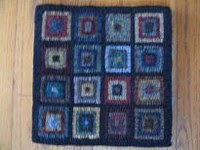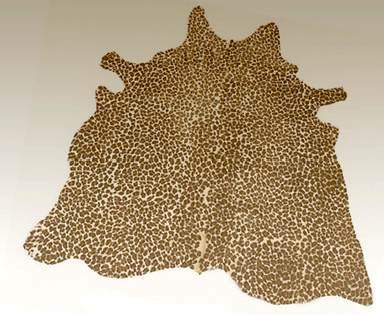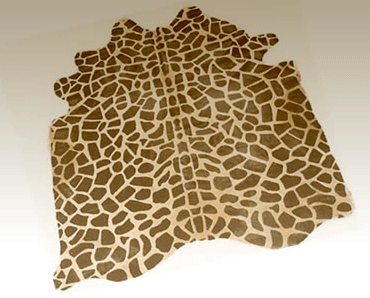Increased sales could reduce lures of terrorism, poppy growingWashington -- Afghanistan’s drive to resurrect its fabled carpet industry with U.S. assistance is a key element in the economic reconstruction of the land-locked Central Asian country, according to U.S. officials.
The Afghan carpet industry employs more than 1 million people, about 3 percent of the population. Millions more work in related industries, such as wool production, cutting, washing and design. Because these dominant industries have significant growth and export potential, the carpet sector has become a major focus for Afghanistan’s government and private-sector support organizations.

In 2005, Afghanistan sold abroad $140 million worth of carpets, its largest official export. If the country could repatriate the portion of its carpet industry that has migrated to Pakistan, the size of the industry would double, according to a study commissioned by the U.S. Agency for International Development. Projected to grow 11 percent a year, Afghan carpet exports could reach $350 million by 2015, according to the study.
For centuries, Afghanistan was recognized as a global leader in carpet production. But after the Taliban took power, many Afghan carpet makers fled to Pakistan. Since the Taliban were defeated in 2001, some 60 percent of the carpet makers who fled have returned to their homeland and are producing goods of exquisite beauty.
A recent article published by a newspaper in Pittsburgh described how Afghan women weavers are channeling their artistic talents into carpets because weaving is one of their few outlets for expression. The article described one woman weaver who created the design of a falling leaf to symbolize her loss of a child.
Unfortunately, just a small fraction of Afghanistan's intricate and beautiful rugs are sold abroad as Afghan products. The reason for this is that more than 90 percent are sent to Pakistan for cutting, washing and finishing. Those carpets are exported to foreign markets with labels that say "made in Pakistan."
The Commerce Department's director of the Iraq and Afghanistan investment and reconstruction task force, Susan Hamrock Mann, says, "We're helping Afghanistan get its identity back and return the entire production to Afghanistan so that they can start stamping the carpets made in Afghanistan."
In January, the Commerce Department orchestrated the first Afghan carpet exhibition in the United States in Atlanta.
A media commentator wrote afterwards, "I've never seen anything quite like what I saw in Atlanta last week at the January rug show. Because it wasn't just another bunch of people selling another bunch of products. It was a group of people trying to change the world."
Carpet makers changing the world? As the commentator explains, his assertion was not far-fetched.
"It doesn't take an economics major to figure out that if the business climate improves over there because we are buying more of their products, then perhaps the Afghan people will be more focused on business than on some of the other things that have torn that country apart over the past 25 years," he writes. "Making rugs is a lot easier, safer and productive than making war or making drugs."
To burnish the allure of Afghan carpets at the Atlanta show, the Commerce Department arranged for rug merchants to exhibit artifacts, art work, and other textiles along with rugs to give the customers a flavor of the country's exotic culture.
Working with the Afghan government, the department helps Afghan rug merchants and government officials deal with import procedures into the United States, marketing, wholesalers, financing, transport and other issues, according to Hamrock Mann. The director and her colleagues played a key role in supporting the first Afghan International Carpet Fair, which took place in Kabul August 26-28. By the end of the third day of the fair, $3 million in sales had been rung up. Commerce Secretary Carlos Gutierrez, who led the U.S. delegation, said, "The industry is expected to grow substantially over the coming years, and this event is a truly historic moment in the re-emergence of Afghanistan in the global carpet market."
The next major event in the Commerce Department's efforts to integrate the Afghan carpet industry into the global market is an international rug show in Las Vegas January 28-February 1, 2008.
"There is a lot of money and many Afghan Americans in the West of the United States," Hamrock Mann said. "We're working on having Afghanistan as a key feature of the show."




















































